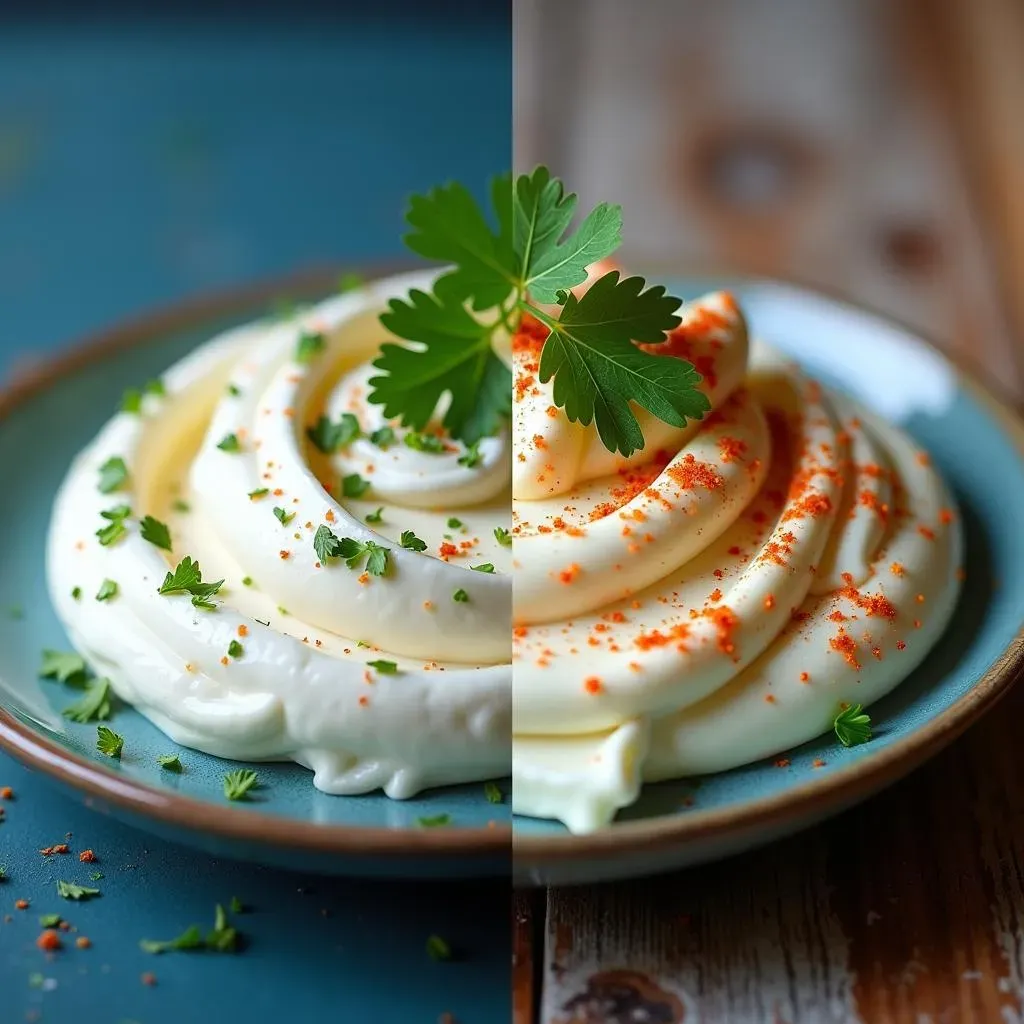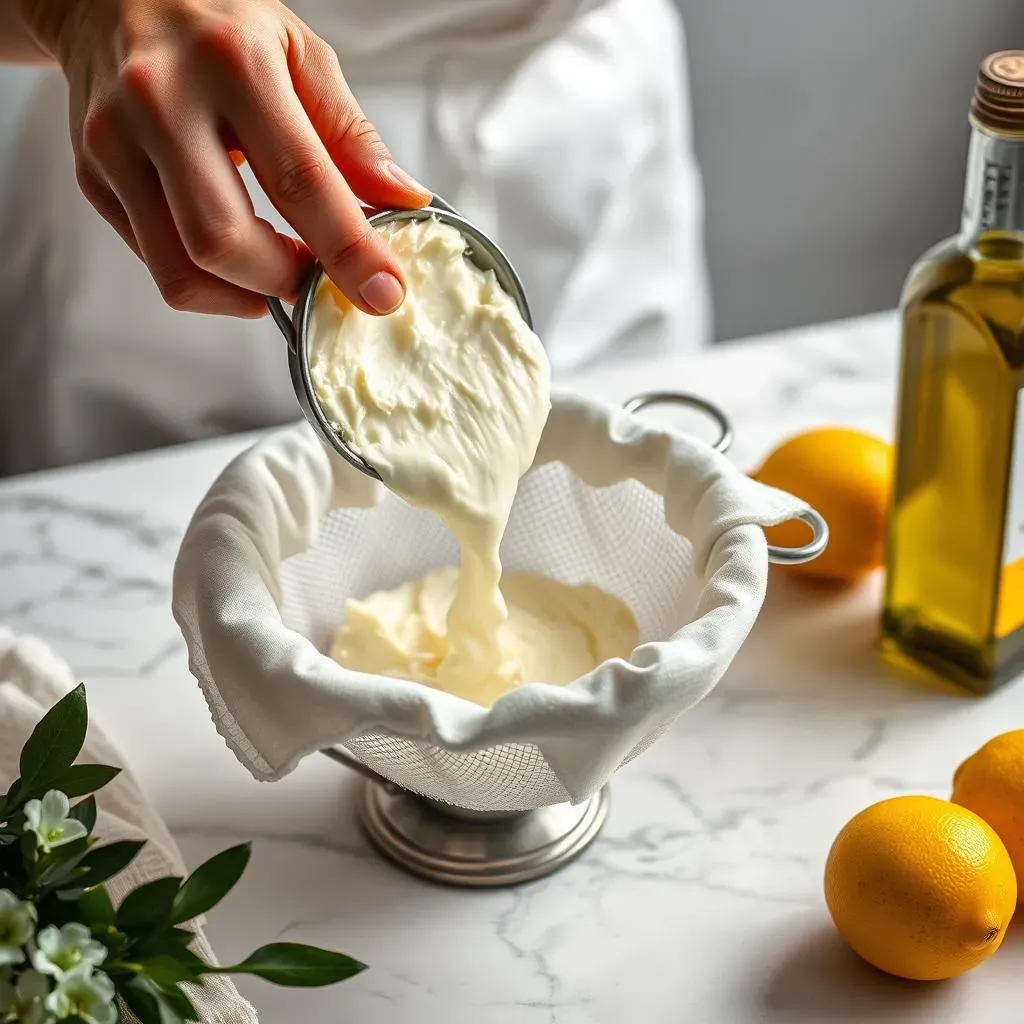Table of Contents
Ever stared blankly at a recipe, realizing you're out of sour cream? Don't panic! We're diving into the surprisingly versatile world of ricotta cheese and exploring whether it can step in for that creamy, tangy staple. The question on everyone's mind: can ricotta cheese be a substitute for sour cream? This article will answer that question definitively, comparing the flavor profiles and textures of ricotta and sour cream to guide you. We'll then explore various recipes where ricotta works surprisingly well as a substitute, and where it might fall short. Finally, we'll share our expert tips and tricks to ensure your baking and cooking adventures are successful, even when you're improvising. So, whether you're a seasoned chef or a kitchen novice, get ready to unlock the potential of ricotta as a surprising sour cream alternative. Let's get started!
Ricotta vs. Sour Cream: A Flavor and Texture Comparison

Ricotta vs. Sour Cream: A Flavor and Texture Comparison
Understanding the Differences
Let's face it, ricotta and sour cream aren't identical twins. Sour cream boasts a distinctly tangy flavor, a smooth, almost velvety texture, and a higher fat content. Think of it as the creamy, zesty sidekick to your favorite dishes. It's amazing in dips, as a topping for baked potatoes, or swirled into chili. You can even find out more about substituting sour cream for yogurt if you're looking for options!
Ricotta, on the other hand, offers a milder, subtly sweet taste. Its texture is more delicate, almost crumbly, depending on the type. It's frequently used in Italian cuisine, adding richness to pasta fillings, pastries, and even some savory sauces. Want to know more about other creamy substitutes? Check out this guide on substituting heavy cream for sour cream.
Characteristic | Sour Cream | Ricotta |
|---|---|---|
Flavor | Tangy, slightly acidic | Mild, subtly sweet |
Texture | Smooth, creamy | Crumbly to smooth, depending on type |
Fat Content | High | Moderate |
When Ricotta Might Work (and When It Might Not)
The key to using ricotta as a sour cream stand-in is understanding the recipe's needs. In dishes where a mild flavor and slightly less creamy texture are acceptable, ricotta can shine. Think of it as a "creamy texture" addition instead of a "tangy cream" addition. For instance, in certain baked goods, the sweetness of ricotta might even complement other ingredients. However, if a recipe relies heavily on the tang of sour cream, ricotta just won't cut it. The lack of acidity will dramatically alter the final dish. A good example would be a recipe requiring a sour cream-based sauce for a taco. Trying to use ricotta instead would just be a disaster.
Considering using a different substitute? There are many options, and you can find out more about sour cream substitutes in general. Sometimes, a little creativity goes a long way in the kitchen! If you're in a pinch and need a quick solution, you could always try Greek yogurt as a substitute.
- Ricotta works well in baked goods where its mild flavor won't clash.
- Ricotta can add creaminess to certain sauces but won't provide the same tang.
- Avoid ricotta as a sour cream substitute in dishes where acidity is crucial.
Using Ricotta as a Sour Cream Substitute in Different Recipes

Using Ricotta as a Sour Cream Substitute in Different Recipes
Baking: Cakes and Muffins
Ricotta's mild sweetness and creamy texture make it a surprisingly good substitute for sour cream in certain baked goods. Think moist cakes and muffins! The ricotta adds richness and moisture without overpowering other flavors. In recipes calling for sour cream, you can often directly swap in an equal amount of ricotta. You might need to slightly reduce the sugar if the recipe already has a sweet profile. Remember, this works best in recipes that aren't heavily reliant on the sour cream's tang. For instance, a carrot cake might benefit from the added moisture and slight sweetness of ricotta. Need more ideas for sour cream substitutes in baking? Check out our guide on substituting sour cream for heavy cream in baking!
However, it's crucial to remember that the texture might be slightly different. Ricotta can be a bit more dense than sour cream. This can be a good thing, adding a pleasant texture to some recipes. But in others, it could mean you'll need to adjust the baking time slightly. Don't be afraid to experiment; baking is all about happy accidents!
Recipe | Sour Cream Amount | Ricotta Substitution | Notes |
|---|---|---|---|
Carrot Cake | 1 cup | 1 cup whole milk ricotta | May slightly reduce sugar |
Banana Muffins | ½ cup | ½ cup whole milk ricotta | Monitor baking time |
Pasta Fillings and Sauces: Adding Creaminess
Ricotta's creamy texture makes it a fantastic addition to pasta fillings and certain sauces. While it won't provide the tang of sour cream, it adds a lovely richness and helps bind ingredients together. This works especially well in fillings for ravioli, lasagna, or manicotti. The ricotta's mild flavor won't compete with the other ingredients in the filling, and it adds a luxurious smoothness to the texture. If you're looking for more ideas on versatile cream substitutes, check out our post on substituting sour cream for cream.
In some creamy tomato sauces, ricotta can add body and depth without altering the overall flavor profile too dramatically. However, it's important to note that ricotta won't provide the same level of acidity that sour cream offers. If the sauce relies on that acidity for balance, ricotta may not be the best option. You can always experiment by adding a touch of lemon juice or vinegar to the ricotta to try and replicate some of the tang.
- Consider ricotta for creamy pasta fillings like ravioli or lasagna.
- It can enrich tomato-based sauces but won't create a tangy flavor.
- Experiment with adding lemon juice to enhance the ricotta's tanginess.
Dips and Spreads: A Cautious Approach
Using ricotta in dips and spreads requires a bit more caution. While ricotta can add creaminess, it lacks the tang that many dips rely on. If you're aiming for a creamy, tangy dip, ricotta may not be the ideal choice. However, if you're looking for a milder, creamier dip, it might work. In this case, you may need to adjust the recipe to compensate for the lack of acidity. This might involve adding lemon juice, vinegar, or another acidic ingredient to achieve the desired flavor. For more options, you might want to consult our guide on substituting cottage cheese for sour cream.
For example, a spinach and artichoke dip might be improved by adding ricotta for creaminess, but you'd likely want to add some lemon juice to balance the mildness of the ricotta. If you're using ricotta in a dip, it’s best to taste-test as you go, and adjust the seasonings and acidity as needed. Remember, culinary creativity is all about experimentation!
Tips and Tricks for Successful Ricotta Substitutions

Tips and Tricks for Successful Ricotta Substitutions
Draining Excess Moisture
Ricotta can be a bit wetter than sour cream, so draining off some excess moisture is key. This prevents your baked goods from becoming overly dense or your sauces from being too thin. Simply line a fine-mesh sieve with cheesecloth, pour in your ricotta, and let it sit for 15-30 minutes. This simple step makes a big difference in the final texture of your dish. For more tips on making the most of your substitutions, check out our article on substituting sour cream for yogurt in recipes.
You'll notice a considerable amount of whey (the watery part of the ricotta) will drain away. Don't throw this away! Whey is actually packed with nutrients and can be used in smoothies or added to baking recipes for extra moisture. It's a win-win situation!
- Use a fine-mesh sieve lined with cheesecloth.
- Let the ricotta drain for 15-30 minutes.
- Reserve the whey for other uses.
Adjusting for Acidity
Ricotta lacks the tang of sour cream, which can be a significant difference in some recipes. To compensate, add a touch of acidity. A squeeze of lemon juice, a splash of white wine vinegar, or even a teaspoon of apple cider vinegar can work wonders. Start with a small amount and taste as you go, adding more acidity until you reach the desired balance. Remember, a little goes a long way!
The amount of acid you need to add will depend on the recipe and your personal preferences. Some recipes might require more acidity than others. It's all about finding that perfect balance of creamy richness and subtle tang. Need more help with sour cream substitutions? Check out our ultimate guide on using ricotta as a sour cream substitute.
Acid Type | Amount (per cup of ricotta) | Flavor Profile |
|---|---|---|
Lemon Juice | 1-2 teaspoons | Bright, citrusy |
White Wine Vinegar | ½ - 1 teaspoon | Subtle, slightly sharp |
Apple Cider Vinegar | ½ - 1 teaspoon | Slightly sweet and tart |
Considering the Recipe's Needs
Not all recipes are created equal. Ricotta works best as a sour cream substitute in recipes where the tang isn't the star of the show. In baked goods, its mild sweetness and creaminess can enhance the overall flavor and texture. However, in dishes where a sharp, tangy flavor is essential, such as certain dips or sauces, ricotta may not be the best choice. Think of the overall flavor profile you're aiming for.
Before making a substitution, always consider the recipe's purpose and flavor profile. If you're unsure, it's always best to err on the side of caution and experiment with a small batch first. For a broader look at sour cream alternatives, explore our guide on substituting sour cream for mayonnaise. You might be surprised by the options!